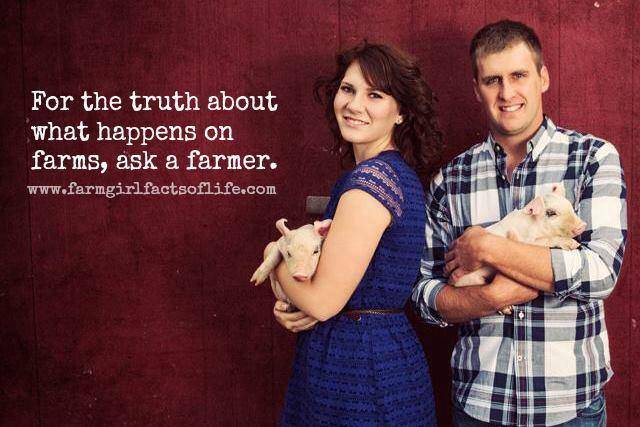-
Latham Hi‑Tech Seeds
In this busy holiday season, we remind you:

-
Latham Hi‑Tech Seeds
R-E-S-P-E-C-T… Find out what it means to me
As another busy year draws to a close, I’ve been reflecting on all the people I have met in 2014. Most people want to make the world a better place, but we have different ideas on how to do this. Even though I don’t always agree with everyone, I make it a point to listen and be respectful.
I also want to be heard. That’s why I’m extremely active in promoting what I do as a farmer. I want to help others understand what farmers do and why we do it. I want consumers to ask their questions to a real farmer!
Too many rules and regulations are being determined by people who have no idea the consequences of their actions. That’s why I’ve been active in a lot of political issues. Regulations of any kind hit my radar: farming, conservation, healthcare, finance, school lunch, and more.
Anytime you enter the political arena, you know you’re going to find people – who are very passionate about their beliefs – on both sides of the issue. Both sides, at least for the most part, believe the world would be a better place if everyone just agreed with them! Take for example the issue of soil and water conservation…
Last year at this time my Letter to the Editor was published in The Des Moines Register. Because of my letter, I received hate mail. Some of the filthiest language imaginable came back to me in the form of “anonymous letter” simply because I’m a farmer. The person who responded to me believes all farmers are polluting all the drinking water in Des Moines.
Am I just hated because I farm? I tried to consider why another person would send me an anonymous letter. I honestly believe this person wants cleaner water, but I don’t believe his distasteful actions will help accomplished his goal. I’m sure he does not have the same life experiences I have had growing up farming. Has he had a terrible experience due to unclean water? Did he live beside a farmer who did not care? (Believe it or not, I have known a few farmers who didn’t care. As with every profession, there are some rotten apples.) I would have liked to have had a conversation with this person, so I could understand where he was coming from but I honestly don’t believe he was interested in either talking or listing. Listening should be a two-way street.
When one listens before speaking, understanding can be reached. Last week I had a conversation with a young lady, who asked why we can’t make gestation stalls larger. I explained to her how gestation stalls actually protect the pregnant pig (sow) from hurting other pigs and more the farmer.
I’m sure this particular lady’s questions were raised after the singer Cher got herself involved in the debate over gestation crates, probably at the request of the Humane Society of the United States (HSUS) Yes, the majority of the people who donate their $19 every month are just trying to help the poor little puppies and kitties they see in the commercials on late night TV. It’s just too bad that their money doesn’t get used as intended. Only one half of one percent of the funds raised by HSUS goes toward animal care! To ensure abandoned animals or displaced pets find a forever home, donate to your local (no kill) animal shelter.
The HSUS is a prime example of how a person can “follow the money and find the motive.” If research is cited, who paid for it? Did the information come from a special interest group? If a consumer is concerned about food safety, did he or she consult with a dietician or a doctor? Or did the consumer get his or her information from the “experts,” like those who set up the new school lunch program?
Speaking of the school lunch program, I’d like to believe that the First Lady wants our kids to grownup healthier. But I’d like to know where she gets her information. Why does she promote the choices for kids that she does? Why not let concerned “experts” like head cooks at local schools choose the best food for their areas?
Another issue I’ve been pondering is the debate on GMOs. Our nation has done such a great job of raising large quantities of food that Americans enjoy the luxury of food choice. Because most Americans want to make healthy food choices, multi-billion (yes, “billon”) dollar anti-GMO campaigns are causing people to fear what they don’t understand. Consider the source before you believe the rhetoric!
Increase your comfort level by engaging in productive conservations. Conversation is a great thing. Really listening is a fantastic thing! Understanding where even the nastiest conversation is coming from brings a whole new light to the conversation.
People are different. Life experiences and information sources makes us that way. As we work to make a positive difference in the world around us, we must remember to disagree without being disagreeable. And keep in mind, the outcome of change affects more than just you!
-
Latham Hi‑Tech Seeds
Baby, Take Your Stress Off!

… It’s the happ- happiest season of all!
These lyrics to the classic Christmas song by Emmy award winning performer Andy Williams could lead one to believe that the holidays are the Most Wonderful Time of the Year. However, studies show this season is among the most stressful time of the year for many Americans and especially for women.
A survey by the American Psychological Association found that more women than men feel stressed at Christmas — and have a harder time relaxing and enjoying the season. According to a Washington Post article, women find themselves trying to meet everyday obligations, finish year-end projects and set goals for the next year, as well as fit in a plethora of concerts and other holiday activities into an already jam-packed schedule.
Many moms work overtime to create magical Christmas memories for their families by decorating children’s rooms with miniature Christmas trees to making homemade Christmas ornaments and DIY Christmas gifts plus baking Christmas cookies.
“We feel stress because we can’t slow down,” says Certified Speaking Professional and author Vicki Hitzges, who led a session entitled “Baby, Take Off Your Stress,” last Thursday during the 4th Annual Executive Women in Agriculture (#EWA14) in Chicago. I found myself nodding in agreement with many of Hitzges’ nuggets of truth and laughing at some of the (admittedly) crazy things I do that add more stress to this season of peace and goodwill.
The trick is not learning ways to reduce stress, says Hitzges. The trick is following is these simple tips:
 Exercise. Research shows that as little as a 5-minute walk can elevate your body’s level of endorphins, which lead to positive feelings. The higher your level of endorphins, the greater your sense of calm and well-being. We’ve all heard the reports that we should walk 20 to 30 minutes a day, but honestly, 5 minutes is better than nothing! It can help boost your energy levels throughout the day.
Exercise. Research shows that as little as a 5-minute walk can elevate your body’s level of endorphins, which lead to positive feelings. The higher your level of endorphins, the greater your sense of calm and well-being. We’ve all heard the reports that we should walk 20 to 30 minutes a day, but honestly, 5 minutes is better than nothing! It can help boost your energy levels throughout the day.- Talk it Out. Taking a problem through can help to put it in to perspective and throw a new, objective view on it. You might want to speak to a good friend, a partner or a family member. Perhaps you would prefer to speak to a colleague or manager at work. You could even look in to talking to your doctor or a trained therapist. No matter how alone you may feel, remember there is always someone there for you.
- Take a Break. Just as electronics sometimes freeze, so can your brain! To reboot your system, step away from the problem momentarily. Get some fresh air. Walk around a bit or climb the stairs in your home or office building. Chat briefly with a friend.
- Laugh and/or Cry. There’s good reason people say laughter is the best medicine. Laughter is like a mini workout as it stretches muscles throughout our face and body. Our pulse and blood pressure go up, plus we breathe faster. Sometimes we laugh until we cry, and other times all we can do is cry! Tears can provide a release for stress, fear, anxiety and grief.
- Map It. Walking away from a problem doesn’t solve anything, Hitzges reminds, but working through problems can provide a sense of calm. Implementing an action plan helps put you in control of making the situation better.
Chances are, the five tips above aren’t anything you didn’t already know. Hitzges offers the following unique ideas:
 Pop a bubble. A survey conducted by Kelton Research reveals that just over one minute of popping Bubble Wrap® provides stress relief equivalent to a 33 minute massage. If you find yourself with a “need to pop” but don’t have any shipping wrap, download the BubbleFREE App for Apple or the Bubble Pop Fun! Android App.
Pop a bubble. A survey conducted by Kelton Research reveals that just over one minute of popping Bubble Wrap® provides stress relief equivalent to a 33 minute massage. If you find yourself with a “need to pop” but don’t have any shipping wrap, download the BubbleFREE App for Apple or the Bubble Pop Fun! Android App.- Work wonders with warm water. Bathe in water that’s 100-101 degrees. Warm (not hot) water provides your entire body with a level of relaxation that reduces some anxiety symptoms and can also relieve physical aches and pain.
- Melt away stress with ice cold water. Someresearchers believe drinking extra water can help
 relieve some anxiety symptoms. Plus, drinking cold water burns calories because your body temperature goes down when you drink it. You burn 8 calories for every 8 ounces of ice cold water you drink. Drink 8 cups per day and burn 64 calories. Burn 448 calories in one week just by sitting on the couch, sipping ice cold water!
relieve some anxiety symptoms. Plus, drinking cold water burns calories because your body temperature goes down when you drink it. You burn 8 calories for every 8 ounces of ice cold water you drink. Drink 8 cups per day and burn 64 calories. Burn 448 calories in one week just by sitting on the couch, sipping ice cold water!
By implementing some of these tried and true stress-relieving tips, may you find yourself singing a new tune this holiday season! … With kids jingle belling and everyone telling you “Be of good cheer …
… It’s the happ- happiest season of all! -
Latham Hi‑Tech Seeds
Nicole Yoder Sets the Facts Straight
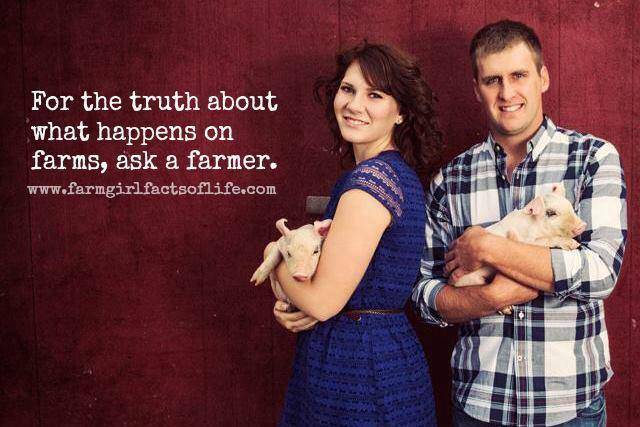
This week I’ve been fortunate enough to attend the 4th annual Executive Women in Agriculture (#EWA14) business seminar, which is designed for any farm woman interested in honing her business skills. Each year I look forward to this two-day seminar in Chicago because it provides opportunities to meet interesting female leaders from the U.S.
Today it gives me great pleasure to introduce to you fellow Iowan Nicole Yoder, who puts her Agricultural Communications degree to good use by blogging at Farm Girl Facts of Life. She also works fulltime in marketing for Firestone Agricultural Tires. In addition, Nicole and her husband run a farrow-to-finish hog operation and raise crops.
Nicole says she started blogging in 2013 because she saw gap in today’s society between where food comes from (the farm) and where it ends up (our mouths). Many people try to tell farmers’ stories without even talking to a farmer. Others, like the singer Cher, try to tell farmers how to do their jobs.
“I strive to bridge the gap between today’s modern farmers and consumers by telling the truth about today’s practices and being transparent,” says Nicole. “It has been a good fit for me being I grew up on a hog and crop farm, and married into the same thing.”
By blogging, Nicole hopes her readers will gain a better understanding about modern day pork production (#RealPigFarming). She writes about what’s happening on their farm, addresses controversial ag topics, as well as shares some recipes and her faith.
Honestly, I appreciate Nicole’s straightforward approach to answering consumers’ questions. I admire the way she advocates for agriculture. I also respect her willingness to share her beliefs and convictions. So if you’re not already following her, I hope you’ll start! She’s on Facebook, Twitter and Pinterest. Why?
“I want people to know farmers are doing the best they can to provide a safe and wholesome product,” adds Nicole. “My husband and I eat the pork that we raise, so it’s in our best interest to provide a quality product for our family, as well as for consumers.”
To help promote the quality #pork her family raises, today Nicole is sharing with us one her favorite recipes for Cheesy Ham and Potato Soup.
-
Latham Hi‑Tech Seeds
New Latham® Releases for 2015
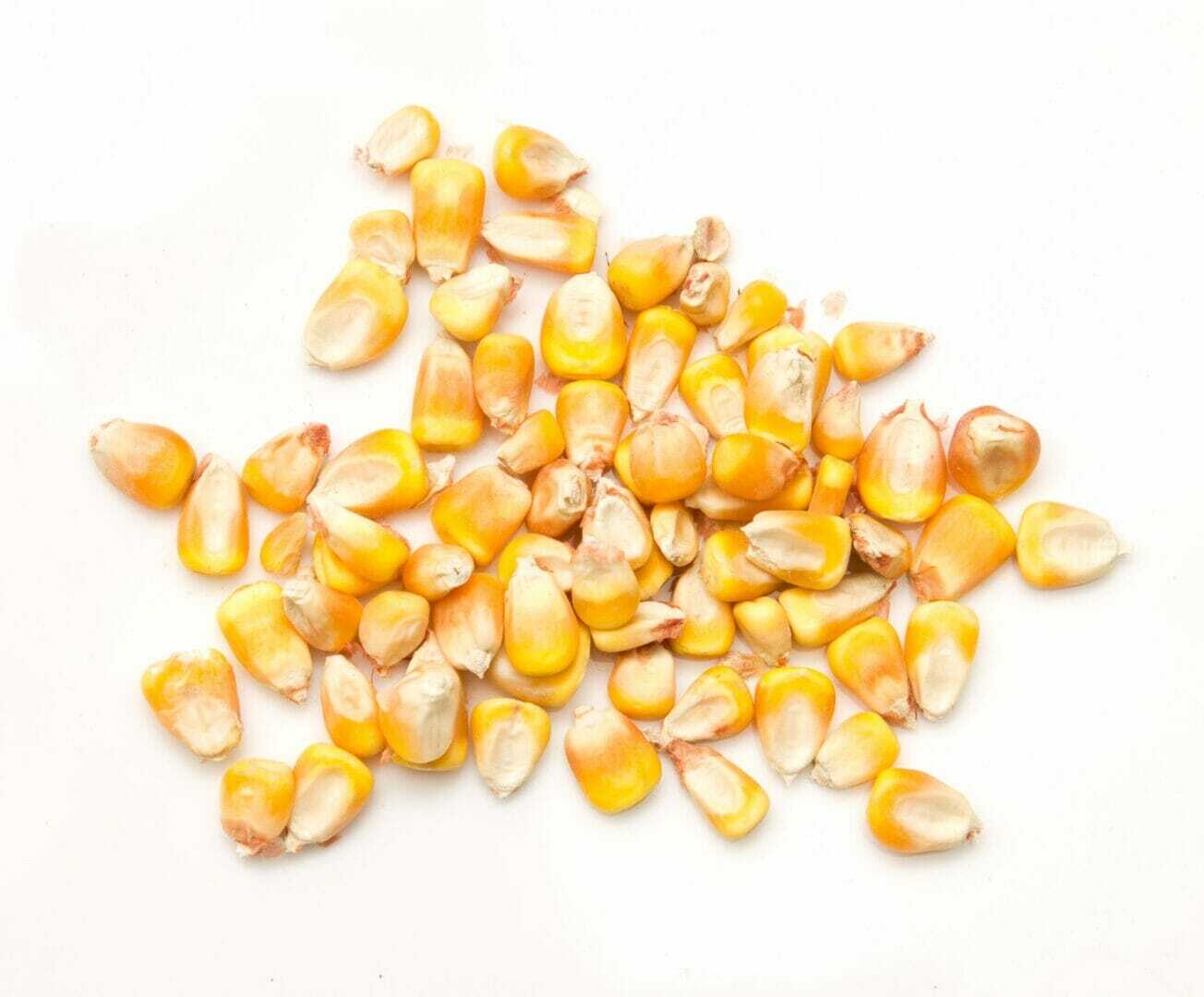
Product selection is an ongoing process at Latham Hi‑Tech Seeds. That’s why the following products have been added mid-season to an already outstanding lineup of Latham® brand corn and soybean products.
To help “answer the call” for additional supply of conventional corn, we are pleased to introduce two new hybrids for 2015 planting:
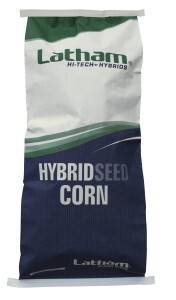
- LH 5120 – This 101-day hybrid features high-quality grain on ears that flex well. This medium-tall plant has excellent roots and responds very well to higher populations with top-end management. An application of a foliar fungicide is highly recommended, especially in areas where Gray Leaf Spot is a concern.
- LH 5400 – This hybrid responds best to top-end nitrogen management in medium to heavy soils. It should be kept in its maturity zone but will move south well. This medium-tall plant has very good late-season intactness. It also carries very good tolerance to Goss’s Wilt and Northern Corn Leaf Blight.
We’re also adding one new Genuity® SmartStax® and two new VT2 PRO RIB (refuge in the bag) hybrids to our lineup:
- LH 5465 VT2 PRO RIB – This is the Double-Pro version of our LH 5466 VT3 PRO. This medium height plant has excellent stalks and roots. It fills a need in our lineup between the LH 5215 and LH 5715 Double PROs. This new hybrid shows a noted suitability to tight, clay soils and is widely adapted east to west as it has excellent drought tolerance.
- LH 5509 SS RIB – A high-yielding, widely adapted product has high test weight and excellent quality grain. It responds well to top-end management and higher populations. It has excellent tolerance to eyespot and Southern Leaf Blight. In the 2014 F.I.R.S.T. trials, it placed 2nd overall in the Southwest Minnesota regional summary and was 9th at the Flandreau location of the Southeast South Dakota region.
- LH 6045 VT2 PRO RIB – Tremendous yield potential and stability under stress are two key strengths of this new 110-day hybrid. It has a very fixed ear, so higher populations and fertility are necessary for optimum performance. The SmartStax version of this hybrid placed very well in the East Central and West Central Iowa regions of the 2014 F.I.R.S.T. trials.
We are also releasing a new 2.3 maturity soybean product:
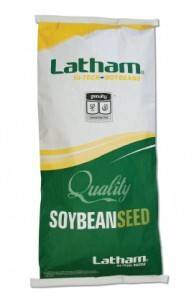
- L2328R2 – This new IroncladTM soybean topped many 2014 SuperStrip plots across Latham Country. This medium-tall plants carries the SCN gene from PI88788, the C-gene for Phytophthora and is resistant to Brown Stem Rot. In addition, it features very good tolerance to Iron Chlorosis, Sudden Death Syndrome and White Mold.
For more information on the above listed products, visit www.lathamseeds.com. Click on the “Products” section and then select the product number.
We also will have very limited amounts of two new experimental soybeans, E0836L and E3448R2. E0836L is a new 0.8 maturity LibertyLink® soybean and E3448R2 is a 3.4 maturity Genuity® Roundup Ready to Yield® Soybean (RR2Y). For more information about these two products, contact your Latham representative or call 1-877-GO-LATHAM (1.877.465.2842).
-
Latham Hi‑Tech Seeds
Wordless Wednesday | Getting in the Holiday Spirit

-
Latham Hi‑Tech Seeds
Less Government Would Help More Farmers
Here in the Upper Midwest, we have produced ourselves into a period of low prices. Times like these show us which farmers have the deepest pockets as they’re the ones who are taking on more ground.
Last week I heard that another young neighboring farmer is losing most of his crop acreage to an older, larger farmer who is able to pay more in rent. That makes three that I’ve heard about in the last three weeks!
It’s no wonder that the average age of the principal U.S. farm operator is 7.5 times higher than the average age of a farmer in the 1980s. Farmers are 17 years older than the average American worker, according to a recent National Geographic article.
Truth is, there are many young farmers – many with a college degree in hand – who are for an opportunity to farm. It’s just that there are many barriers to entry, including the high price of farmland and equipment.
Any business is hard to start from scratch. But the very capital intense business of farming, with very low or even non-existent margins, makes it next to impossible to get started without help. There are many USDA programs to jump start a farm. There are even tax benefits for those who rent to a young farmer, yet too many barriers remain.
Here are a few barriers that must be removed to help younger farmers:
- Reduce cumbersome regulations that cost farmers’ money. Research shows farmers are likeable people, yet some vocal consumers hate the practices we use. This has led to many regulations. What we need are more people who understand farming and know that farmers – not the government – should decide the best way to farm.
- Remove death tax. If a young farmer is fortunate enough be part of a family farm, then our government shouldn’t make it impossible to keep that farm in the family.
- Our current administration claims to support the middle class, yet life is getting more expensive. The cost of energy tops my list. By limiting how electricity is generated, costs can only rise. Coal and atomic power are by far our most reasonable priced. Making our abundant oil supply more efficient with pipelines and rail also would be a huge help.
Plus, the U.S. needs to stop throwing dollars at our competition! The new Farm Bill is a SNAP for foreign farmers. Building roads and infrastructure in other countries may be a great cause, but we shouldn’t build them with dollars that the American public already thinks of as “American Farmer Welfare.”
The U.S. Farm Bill should not decide who the winners and losers. We can’t keep throwing the huge amount of dollars at the farmers that know how to “farm” the government. I’ve been studying the new farm program that we need to sign up for, and it’s a complicated mess. What a farmer decides right now can make or break a farm, and you have to live with your decision for the life of the Farm Bill!
The U.S. government is getting too complicated and expensive. Too much money thrown at problems that don’t get fixed. I believe most farmers can make it if we can keep the government at bay.
Bottom line: Let the economy and the hard work of farmers decide how the farms in this country will transition. They may get bigger, or they may start many new small specialty farms. However, the current system of government meddling is just going to tilt the transition the wrong way.
-
Latham Hi‑Tech Seeds
Let’s Move this Country Forward!
In this week of Thanksgiving, I’ve been thinking a lot about food – more specifically the growing number of hungry Americans. In 2012, there were 15.8 million kids living in food-insecure homes in this country. A growing number of these children don’t even live in homes! A staggering 2.5 million children – or 1 in every 30 children – are homeless in America.
It’s ironic that food insecurity is an issue in a country where each farmer grows enough food to feed 155 people! As recently as 1960, a farmer only feed 25.8 people. You’d think we’d be making strides in feeding everyone, yet it seems we’re becoming more of a country of “haves and have nots.”
While 1 in 6 Americans struggles with hunger, obesity is becoming a real problem for a growing number of Americans. The percentage of children aged 6–11 years in the United States who were obese increased from 7% in 1980 to nearly 18% in 2012, according to the Centers for Disease Control and Prevention. The percentage of obese adolescents aged 12–19 years increased from 5% to nearly 21% during the same period.
Why is one in five kids in this prosperous country at risk of going to bed hungry? (And I’m not even talking about school lunches!) Is hunger related to the percentage of income it takes in this country to buy food? Data from the U.S. Agriculture Department (USDA) shows that Americans spent only 6.6 percent of their 2012 household income on food. Americans spend less of their income on food than any other country.
Is there a correlation between hungry Americans and the percentage of the food dollar that gets returned to the farmer? This week I’ve been engaged in a related conversation started by farm broadcaster Trent Loos. This online discussion reports that a farmer only receives from 11.6 to 18 cents each food dollar, so this stat alone would suggest that hunger in America is caused by something else.
With a growing amount of welfare support including the Supplemental Nutrition Assistance Program (SNAP), as well as school lunch programs and summer lunch programs, one would think everyone is getting everyone fed! I believe food (in)security is a very complex issue. It’s one that will take time and many different approaches to fix, but I do believe it can be fixed!
It not politically correct for me to say this, I know, but I believe the deterioration of moral values is a major reason we’re seeing an increasing number of homeless and hungry people. When I was child, families were intact and parents took pride in working hard to put food on their own tables. America’s family and living arrangements have changed drastically. The number of single-parent households is on the rise. Broken families are a huge issue; it’s very difficult for a single parent to pay for the costs of living today.
In addition to food and clothing, many Americans now feel entitled to cable TV, gaming systems and smartphones. The average U.S. household today has more televisions than people! Priorities have changed during the past 50 years, and the line between wants and needs has become blurred.
It’s time to stop the attitude of entitlement! Government handouts are not working. Education and training programs all good ways to start. American workers don’t need a PhD, but they do need skills and training to make a good living.
Every student gets a good job when graduating from North Iowa Community College in Industrial Technology (welding, tool and die, diesel technology, building trades). The Iowa State College of Agriculture has a 98% placement rate. It’s being done… this is how we can move this country forward! I truly believe we can do this if we get our values back where they belong!
This Thanksgiving I hope you and your family will enjoy time together and give thanks for all of blessings. Whether you celebrate with ham or turkey, remember wrapping it in #bacon makes everything better. 🙂 Happy Thanksgiving!
-
Latham Hi‑Tech Seeds
Help #CanHunger this Holiday Season
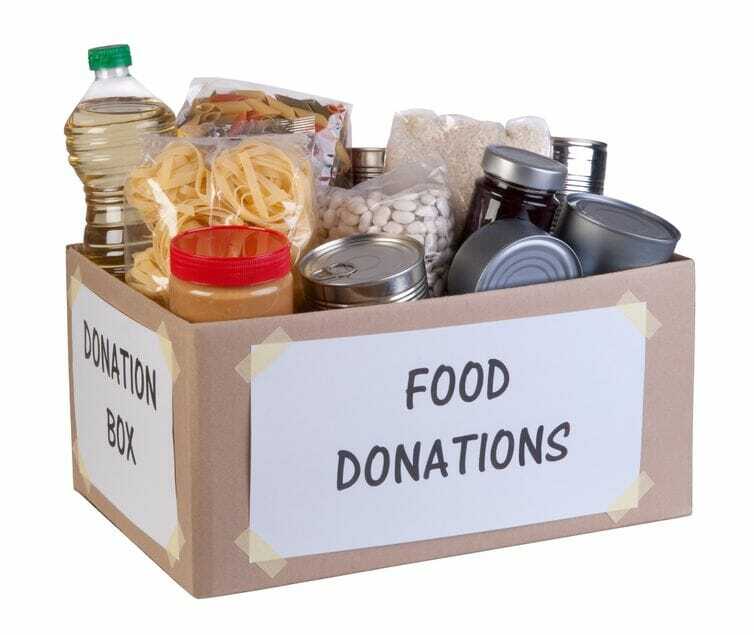
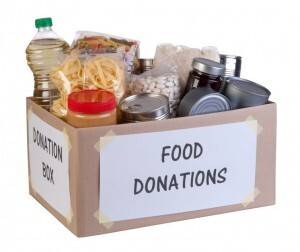 Each year, right before Thanksgiving, confirmation students in our local community conduct a food drive. Last Wednesday night 472 items were collected for the Franklin County Food Pantry!
Each year, right before Thanksgiving, confirmation students in our local community conduct a food drive. Last Wednesday night 472 items were collected for the Franklin County Food Pantry!I’m pleased to say that our family donated to the local food drive. But if I would have known then what I know now, our donations would have been different. First of all, I would have included some toiletries like toothpaste, toothbrush, deodorant and bar soap, plus paper products and garbage bags as these items cannot be purchased with food stamps.
Secondly, I would have made sure my donated items contained more ready-to-go meals like beef stew and chili with meat. I also would have included a box of crackers along with instant soup packets. Finally, I would have donated canned potatoes, carrots and peas because green beans are most often donated. I also would have donated canned fruit other than pineapple, which is most commonly donated.
“We surveyed food banks and the items we found to be most in demand are: canned chicken and canned tuna, peanut butter, soup, boxed meals, pasta, canned veggies and canned fruit,” says Lindsey Haley, Operations Manager for the Iowa Food Bank Association.
If you plan to donate food items to your local food bank, please:
- Choose boxes (rice, potatoes, macaroni, etc.) as bags of food can tear easily.
- Donate low-sugar cereal like plain Cheerios or Raisin Bran.
- Purchase instant meals like oatmeal or biscuit mix that only require water because they’re easier to make.
- Know that cans, cartons or boxes of powered and evaporated milk are always needed.
- Remember that juice boxes, applesauce containers and granola bars make great snacks for kids.
“The best donation a person can make is a cash donation as the food banks can purchase approximately 4 meals for every $1 that’s donated,” adds Haley.
Because $1 can make such a big difference, I’m making a monetary donation this week to help fight hunger. Are you up for the challenge?
The Murphy family from Johnston, Iowa, has issued an open invitation to the #CanHunger challenge, which includes donating to FeedingAmerica.org or to your local food bank. Iowa Girl Eats Kristin Porter and many North Iowa Bloggers have accepted the challenge. You can, too!
Sign a canned food item, donate it to your local food bank, and then challenge three of your friends to do the same. Use the hashtag(#) and see how we can all help make a difference. #CanHunger this holiday season!
-
Latham Hi‑Tech Seeds
Meet the Farmers behind Your Thanksgiving Turkey

 With Thanksgiving preparations underway, it seems like everyone is talking turkey. Thanks (insert sarcasm) to the FoodBabe, some folks are questioning whether their Thanksgiving turkey is safe to eat.
With Thanksgiving preparations underway, it seems like everyone is talking turkey. Thanks (insert sarcasm) to the FoodBabe, some folks are questioning whether their Thanksgiving turkey is safe to eat.So Iowa turkey farmer Katie Olthoff is setting the record straight! Earlier this month she drafted a response to the FoodBabe’s unfounded and erroneous information to give consumers the truth about turkey:
“As farmers, we have two top priorities: animal welfare and food safety. Every single decision we make that influences either of those outcomes is thoroughly researched by my husband and I and the network of veterinarians, animal nutritionists, and scientists we work with regularly.”
Earlier this week, Bart and Katie took viewers inside their turkey barns during an interview by ABC5. They’re also sharing the facts through a new book, My Family’s Farm, which is available online. This week Katie was gracious enough to answer some interview questions below, so I hope you’ll enjoy learning more about her family’s farm and her new book!
![cover_thumb[3]](https://www.lathamseeds.com/app/uploads/2014/11/cover_thumb3-200x300.jpg) Shannon: Tell us about your new book.
Shannon: Tell us about your new book.Katie: My Family’s Farm is a non-fiction children’s book written about our farm from the point of view of our 6-year-old son, Adam. It features photographs of our farm and additional text for older students and adults.
Shannon: What prompted you to write the book?
Katie: A couple of years ago, Adam asked me why we don’t live on a “regular farm.” He thought we should have a couple of pigs, a dairy cow and some sheep. I realized that children’s media only portrays livestock farms like “Old MacDonald’s.”
I wanted to show modern livestock farms, and help my son and others realize that our farm is a “regular farm.”
Shannon: Two years ago… so this has been in the works a while.
Katie: Yes, writing the book was the easy part. The photography took longer, but the real issue was publishing. Getting a book published through a traditional publisher is a challenge. The Iowa Turkey Federation offered to help me self-publish the book, so I took them up on their offer and finished the project.
Shannon: How can people get a copy of the book?
Katie: The best way is to check it out online! It is available as a FREE e-book at www.onthebanksofsquawcreek.com or www.iowaturkey.org. The Iowa Turkey Federation is graciously giving away copies to teachers in Iowa, too. Just email katie@iowaturkey.org to request your copy.
Shannon: One final questions, “Does your family eat a lot of turkey?”
Katie: We sure do! At least one of us eats turkey every day! My boys are sort of picky eaters, but they love turkey pepperoni and lunchmeat. I use turkey instead of chicken and ground turkey instead of ground beef in almost all of my cooking.
Today on the TheFieldPosition, Katie is sharing her son’s favorite Turkey Snack Sandwiches. Here are a a few additional recipes you can make.
Additional Turkey Recipes:
-
- Hot Turkey Dip – a snack for the grown-ups, courtesy Iowa Turkey Federation
- Slow Cooked Turkey Breast
- Turkey Lemon Garlic Rotini with Zucchini
-

